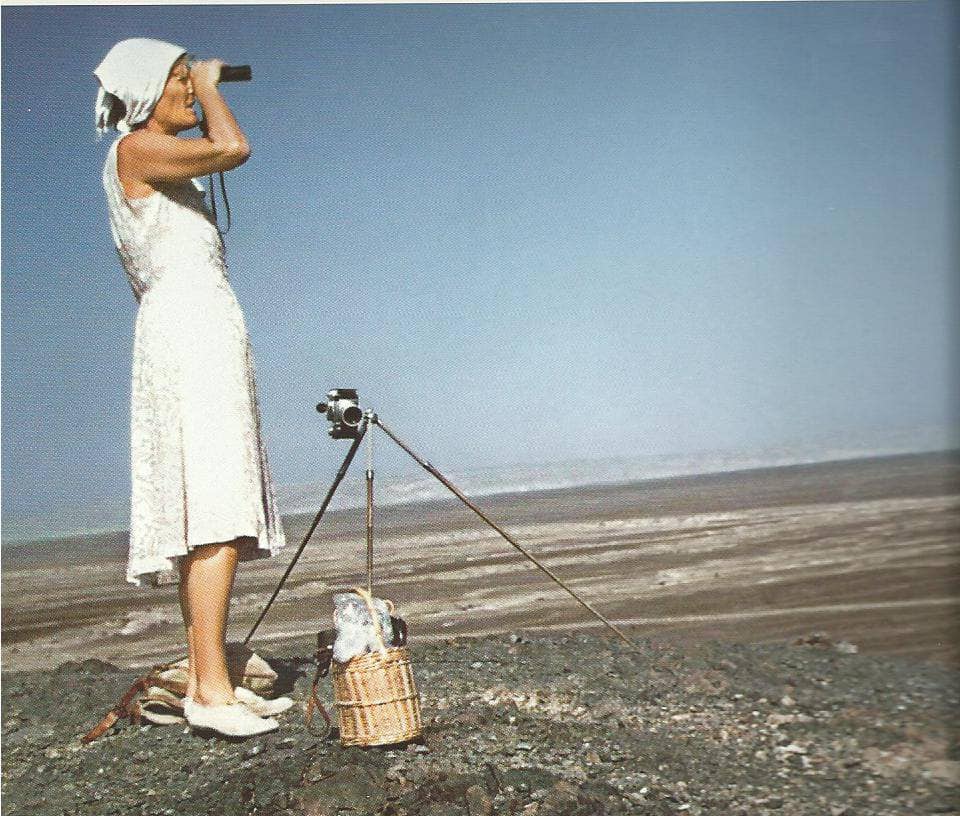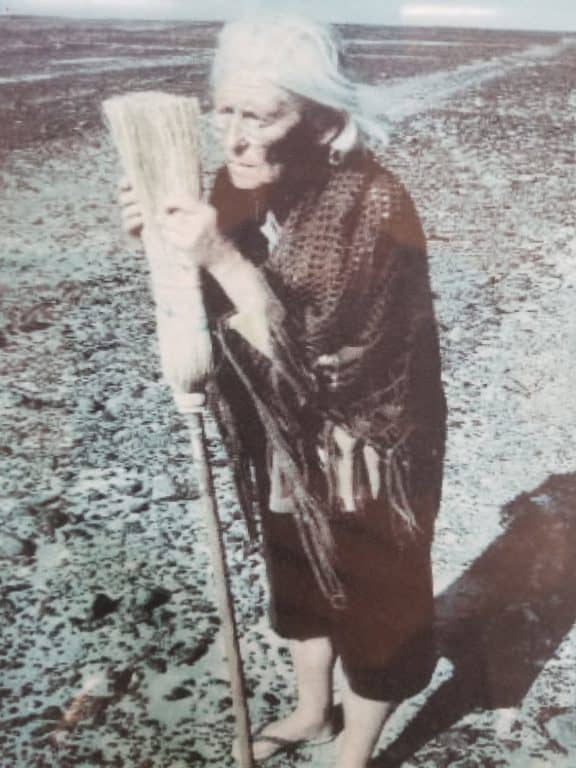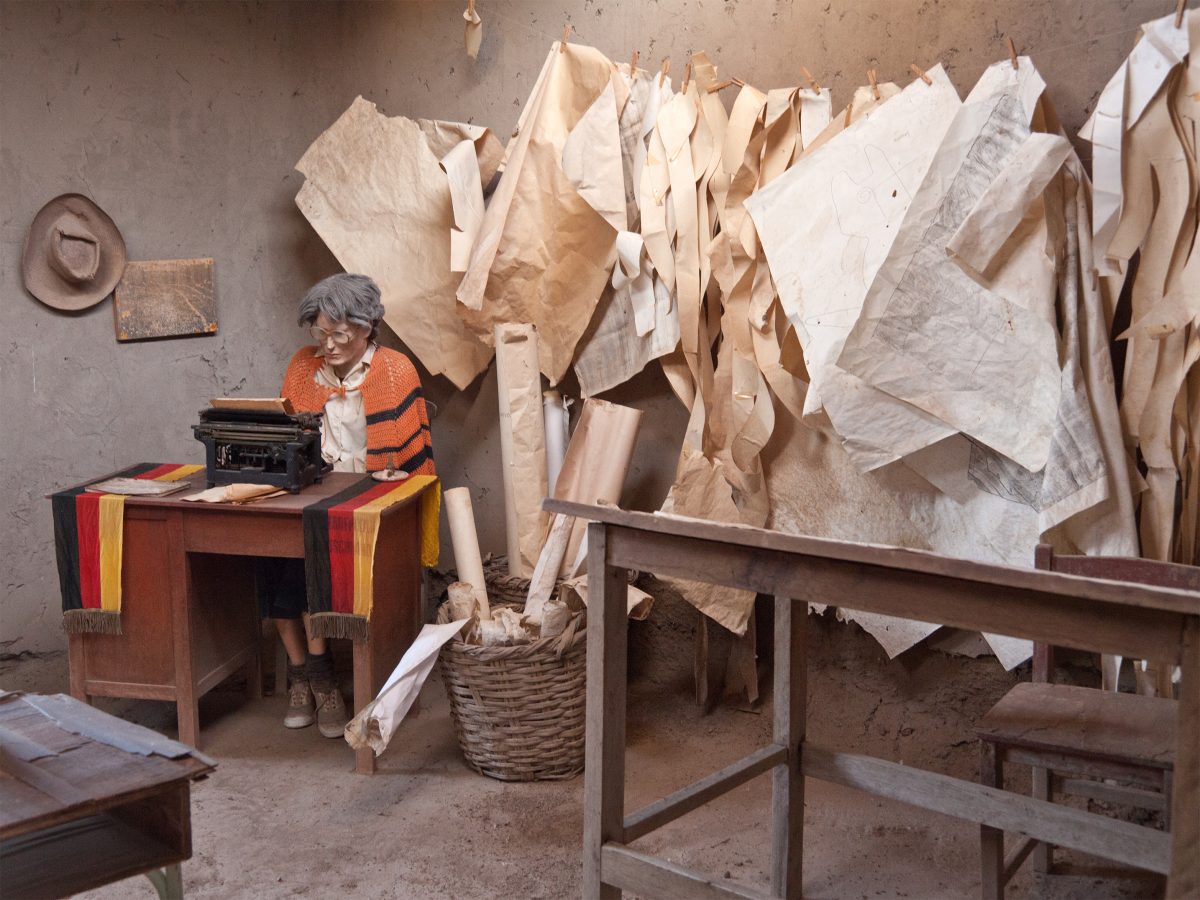“If I had a hundred lifetimes, I would have given them to Nazca. And if I had to make a thousand sacrifices, I would have made them, if for Nazca.”
– Maria Reiche

Maria Reiche (15 May 1903 – 8 June 1998) was the ‘Lady of the Lines’. The German-born Peruvian mathematician, archaeologist and technical translator is remembered for her research into the Nazca Lines, which she first saw in 1941 together with American historian Paul Kosok (21 April 1869 – 1959).

María Reiche and Paul Kosok
Captivated by the lines believed to have been made between 700 BC and 900 AD, Reiche built a hut among them in the Peruvian desert, where she lived for 40 years.
She climbed ladders to survey the land she mapped. She cleaned the lines of sand and rock, and performed countless mathematical calculations to try to figure out their significance. She protected them from intruders by employing security guards paid for by the income from her writings. In all she spent 55 years in the desert working on the lines.

The first published mention of the Nazca Lines was by Pedro Cieza de León in his book of 1553, and he described them as trail markers. In 1569, Luis Monzón reported having seen ancient ruins in Peru, including the remains of “roads”. In 1927, Peruvian archaeologist Toribio Mejía Xesspe noticed the lines while he was hiking through the foothills.
Reiche asserted that some or all of the geoglyphs represented constellations.
Due to the mystery about their purpose and that they can only be fully seen from the sky, anthropologists, archaeologists and astronomers contend their purpose with new-agers and alien theorists. Were these shapes attempts to contact the gods, who according to some are extraterrestrials?
”There is still so much to know, so many figures to check,” she said. ”We have to penetrate into the minds of the Indians who drew those lines,” she said, ”and work the way they worked to find the answer.”


The Nazca lines first appeared to be one-dimensional, often running incredibly straight across the landscape. Maria’s work gave them two-dimensional forms as she followed the lines deep into the desert.
In 1946, without having flown over the region by plane but based solely on her drawings made from her observations in the desert, she discovered the so-called spider shape.

The Spider
The lines are huge drawings. And one of them resonated with Maria. Gerardo German Davalos, a guide at the Maria Reiche Museum, located in the village of El Ingenio, tells a story:
“She had lost a finger on her first trip to Cusco. An infection that left him with only 9 fingers. When she discovers the figure of a monkey in 1952 who also has only 9 fingers, she finds the coincidence disturbing. Then she discovers the shapes of the frog and the lizard, which also lack a finger”, explains Gerardo. It is a shock that upsets her and puts her in a state of trance. The guide continues: “Maria gradually remembers having been a princess of the Nazca culture in a previous life. This revelation makes her understand that she will never be able to leave Peru. She is destined to die there.”

Today we can see hundreds of simple lines and geometric shapes; more than 70 are zoomorphic designs, including a hummingbird, spider, fish, condor, heron, monkey, lizard, dog, cat, and what could be a human (below). Other shapes include trees and flowers.
Most of the animals are between 100 and 400 feet long, though the hummingbird measures more than 900 feet

The lines are mostly shallow furrows 4 to 18 inches wide and about 3 inches deep. They were made by scraping away a surface of brown stones, revealing yellow dirt beneath. The rocks are rich in iron and gypsum. Warm air over the lines deflects sand caught in the winds. The average rainfall is one-quarter inch a year, preventing water erosion.
The main destroyer of the lines has been humanity. Crossing the desert are many car tracks and the Pan American Highway, built across the land in 1939. It cuts through the figure of the Great Lizard.
How long they will remain in view is moot. Viktoria Nikitzki of the Maria Reiche Centre has expressed concern:
“The Lines themselves are superficial, they are only 10 to 30 cm (4 to 12 in) deep and could be washed away… Nazca has only ever received a small amount of rain. But now there are great changes to the weather all over the world. The Lines cannot resist heavy rain without being damaged.”

“It would be to have a very low opinion of our ancestors, if we supposed that all this immense work, meticulous and precise, detailed and carried out with perfect perfection, was for the sole purpose of serving a primitive superstition or a sterile worship of the ancestors. On the contrary, we have here the testimony on a large scale and unique in the world of the first awakening of the exact sciences in the evolution of humanity, a gigantic effort of the primitive spirit which is reflected in the greatness of the execution under the wide sky of the immense and lonely pampas, swept by the wind and scorched by the sun.”
– Maria Reiche


Maria’s home in Nazca, Peru, is now a museum. One of the installations (below) shows a model of the scientist working among her maps and papers.


Maria Reiche received recognition as Doctor Honoris Causa by the National University of San Marcos and the Universidad Nacional de Ingenieria in Lima. Reiche helped gain national and international attention for the Nazca Lines; Peru established protection, and they were designated a UNESCO World Heritage Site in 1994.
Would you like to support Flashbak?
Please consider making a donation to our site. We don't want to rely on ads to bring you the best of visual culture. You can also support us by signing up to our Mailing List. And you can also follow us on Facebook, Instagram and Twitter. For great art and culture delivered to your door, visit our shop.









